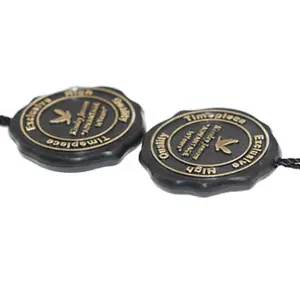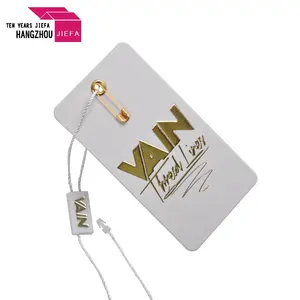(24000 products available)


























































































































































































































Seal tags are small labels used to authenticate or indicate the closure of a package or container. They are commonly used in shipping, retail, and security applications. Here are some key types of seal tags:
Plastic Seal Tag
Plastic seal tags are durable and lightweight tags made from high-density polyethylene or polypropylene. They are flexible and come in various colors and sizes. Plastic seal tags are commonly used for securing containers, bags, and pallets in shipping and logistics. They are resistant to moisture and chemicals, making them suitable for indoor and outdoor use. Their versatility and strength make them ideal for both temporary and long-term sealing applications.
Security Seal Tag
Security seal tags are used to secure and authenticate shipments, containers, and packages. They are tamper-evident, meaning they show clear signs of tampering if someone tries to remove or alter them. Security seal tags come in various forms, including adhesive labels, plastic tags, and metal seals. They are widely used in logistics, retail, and law enforcement to ensure the integrity and security of goods. Their tamper-evident features provide a reliable way to safeguard against unauthorized access and ensure accountability in the supply chain.
Metal Seal Tag
Metal seal tags are robust and tamper-evident. They are made from stainless steel or aluminum. These seal tags are used in high-security applications, such as securing cargo containers, trailers, and high-value shipments. Metal seal tags are resistant to cutting and tampering, providing a high level of security. Their durability and strength make them suitable for harsh environments and critical security applications.
Custom Seal Tag
Custom seal tags are designed to meet specific requirements for branding and security. They can include logos, barcodes, QR codes, and other identification features. Custom seal tags are used in retail, logistics, and manufacturing to provide a unique and personalized sealing solution. They offer enhanced brand visibility and can incorporate specific security features to protect against tampering and unauthorized access. Custom seal tags are produced using advanced printing and tagging technologies, allowing for high-quality and durable tags tailored to the needs of different businesses and industries.
Seal tags come in various designs, each tailored to meet specific security and identification needs. Here are some key design elements and variations:
Material and durability
Seal tags are made from various materials, each with distinct properties and applications. Plastic seal tags are lightweight, flexible, and resistant to moisture and chemicals, making them ideal for general-purpose use. Metal seal tags, often crafted from stainless steel or aluminum, provide enhanced durability and tamper resistance, making them suitable for high-security applications. Paper seal tags offer a cost-effective solution for temporary marking and identification, though they are less durable and may be susceptible to moisture. Silicone seal tags, known for their flexibility and resilience, are increasingly popular for applications requiring a snug fit and resistance to extreme temperatures.
Closure Mechanism
The closure mechanism of seal tags is crucial for ensuring security and tamper evidence. Locking seal tags utilize mechanical locks or sliding mechanisms that secure the tag in place and can only be opened with a specific tool or key. Adhesive seal tags rely on strong, pressure-sensitive adhesives to bond the tag to the item, providing a straightforward and effective tamper-evident solution. Interlocking seal tags feature interlocking components that securely fasten the tag, making them difficult to remove without damage. Each closure method offers unique advantages in security, ease of use, and versatility, catering to different sealing and identification requirements.
Design and Customization
Seal tags often incorporate distinctive designs, colors, and logos to enhance security and provide brand recognition. Customization options allow businesses to imprint their brand identity, barcodes, QR codes, or serial numbers onto the tags. This personalization not only deters counterfeiting and unauthorized access but also facilitates easy identification and tracking within inventory systems. The design elements can be tailored to align with specific branding requirements while ensuring high visibility and recognition in various environments.
Tamper-Evident Features
Seal tags are designed with various tamper-evident features to enhance security. Breakable seal tags contain a tag that breaks or leaves evidence of tampering if removed, providing clear indication of unauthorized access. Self-adhesive seal tags generate a permanent bond upon application, leaving behind a residue or altering the tag's appearance if removed. Destructible seal tags, on the other hand, disintegrate or damage upon attempted removal, leaving behind irreparable evidence. These tamper-evident characteristics are crucial for maintaining the integrity of sealed items, ensuring quick identification of potential security breaches.
Application and Versatility
Seal tags find application across diverse industries and settings. In logistics and shipping, they secure containers and pallets, ensuring safe transport and tracking. Retail stores utilize seal tags for merchandise security, preventing theft and unauthorized access. In pharmaceuticals, seal tags safeguard drug shipments, maintaining compliance with regulatory standards. Their versatility extends to electronics, food packaging, and event access control, making them indispensable tools for security, identification, and inventory management in various contexts.
Seal tags can be used in various ways depending on the occasion. Here are some tips on how to wear and match seal tags to elevate one's style:
Casual Look
Seal tags can be incorporated into casual outfits for a unique and personalized touch. For instance, one can attach a seal tag to one's favorite denim jacket or backpack. This is a great way of adding a pop of color and texture. To achieve this, select a seal tag that complements the overall color scheme of the outfit. For example, a bright-colored seal tag can add a playful touch to a monochrome outfit. Alternatively, a seal tag with a metallic finish can add a touch of elegance to a casual look.
Streetwear Style
Seal tags are a common accessory in streetwear fashion. They are used to label clothing and accessories. They can be used to customize and personalize streetwear outfits. One can attach multiple seal tags to one's hoodie, jacket, or bag. These tags create a layered and dynamic look. Select seal tags with bold colors and graphics. These tags will stand out and make a statement. Consider the placement of the tags. This will create a balanced and visually interesting composition.
Sporty Chic
Seal tags can also be used in sporty chic outfits. Integrate seal tags into athleisure outfits for a touch of personalization. Attach a seal tag to a baseball cap or a gym bag. This adds a customized and unique element. Choose seal tags that are durable and weatherproof. Such tags will withstand the elements and active lifestyle. Go for tags with vibrant colors or reflective materials. This enhances visibility and adds a modern edge to the sporty look.
Minimalist Aesthetic
Seal tags can be incorporated into minimalist outfits for a subtle and sophisticated look. Opt for seal tags in neutral colors such as black, white, or gray. They blend seamlessly with the minimalist color palette. Attach a seal tag to a plain t-shirt or tote bag. This adds a discreet and modern detail. Consider seal tags with sleek and simple designs. These tags will complement the clean lines and streamlined silhouettes of minimalist fashion.
DIY Customization
Seal tags can be used to create customized and personalized accessories. Use blank seal tags and write one's name or initials using a permanent marker. This creates a unique and identifiable accessory. Another way is to attach a seal tag to a keychain or zipper pull. This adds a customized touch to bags and belongings. Choose seal tags in different shapes and colors. These tags will allow for creative and personalized customization.
Q1: How does one apply a seal tag lock?
A1: Applying a seal tag lock involves inserting the tag's pin into the locking mechanism of the tag body until it clicks securely. Ensure the lock is engaged by testing the tag on a hard surface; it should not open easily.
Q2: Can seal tag locks be reused?
A2: No, seal tag locks are designed for one-time use only. Once locked, they cannot be reopened without damaging the tag, which renders it unusable for future applications.
Q3: What should one do if there is a problem with a seal tag lock?
A3: If there is an issue with a seal tag lock, such as one that won't lock or an already locked tag that needs to be opened, contact the supplier or manufacturer for assistance. Do not attempt to force the lock or bypass its security features, as this could compromise the tag's integrity.
Q4: Are seal tag locks safe for high-value items?
A4: Yes, seal tag locks provide a secure attachment and robust locking mechanism that deter tampering and theft. They are ideal for securing high-value merchandise in retail settings.
Q5: What are the advantages of using seal tag locks over traditional locks?
A5: Seal tag locks offer several advantages, including ease of application, one-time use that ensures security, and compatibility with anti-theft tags. They provide reliable protection for items while simplifying the locking process compared to traditional locks.